Summary Inflation Report Consumer Price Index (2018=100) December 2023
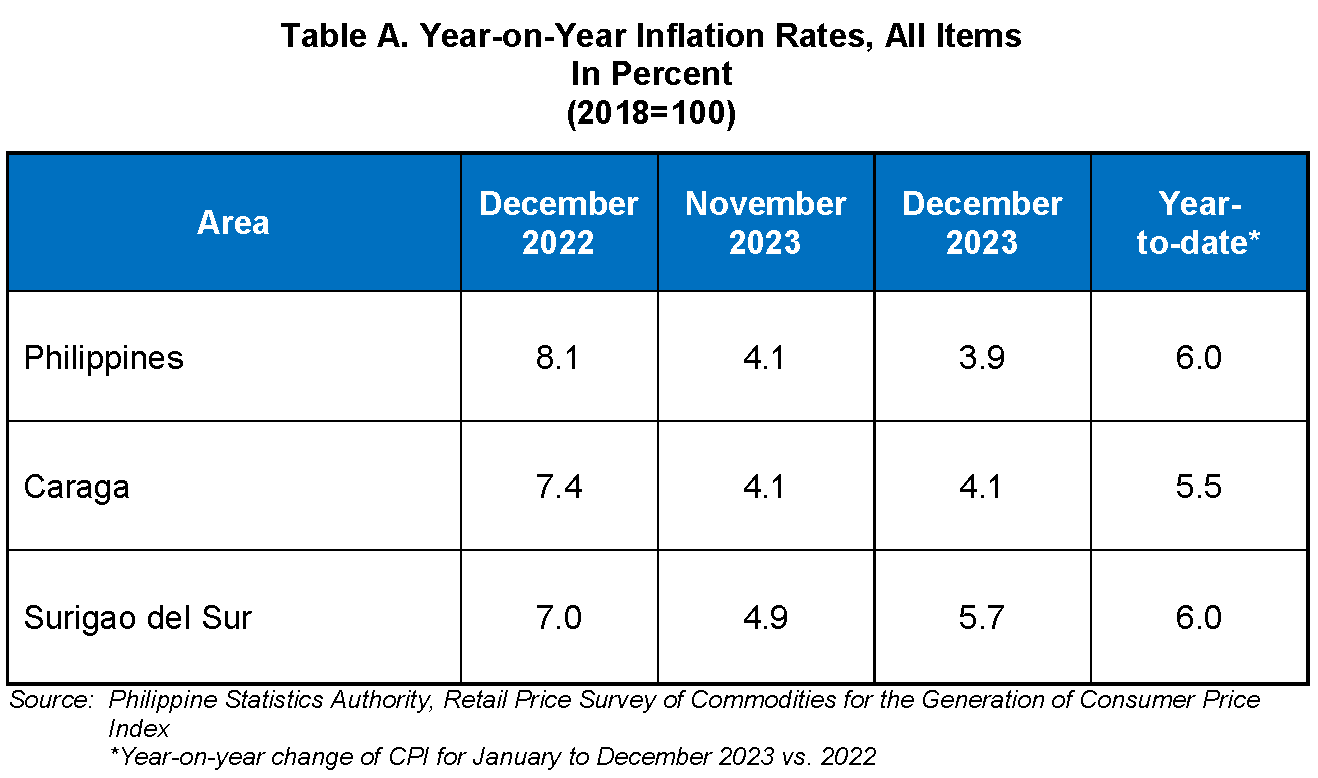
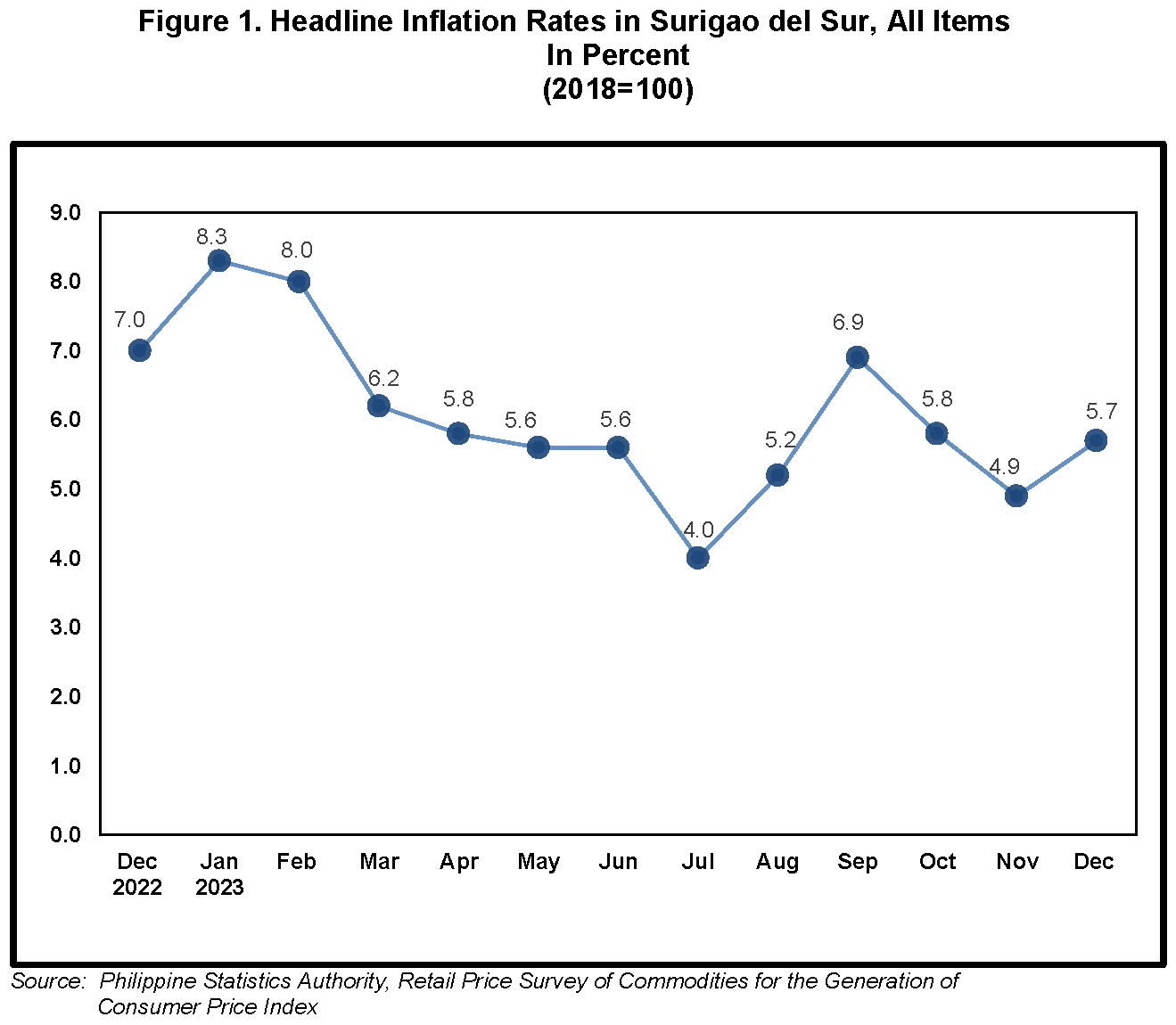
Headline Inflation
The headline inflation or overall inflation in Surigao del Sur increased to 5.7 percent in December 2023, from 4.9 percent in November 2023. Inflation in December 2022 was higher at 7.0 percent. The average inflation rate from January to December 2023 stood at 6.0 percent. (Table A and B)
For comparison, the provincial headline inflation in December 2023 is faster than the regional and national headline inflation at 4.1 percent and 3.9 percent, respectively.
The uptrend of overall inflation in December 2023 was mainly brought by the heavily weighted food and non-alcoholic beverages, which recorded an inflation rate of
9.3 percent from 8.9 percent in the previous month. This was followed by housing, water, electricity, gas and other fuels with an inflation rate of 4.2 percent from 1.3 percent in the previous month.
Compared with the previous month’s inflation rate, higher annual increment were noted in the indices of the following commodity groups during the months:
a) Alcoholic beverages and tobacco, 6.2 percent from 5.6 percent;
b) Transport, -1.2 percent from -1.4 percent;
c) Recreation, sport and culture, 3.7 percent from 3.4 percent; and
d) Restaurants and accommodation services, 8.1 percent form 5.9 percent.
On the contrary, slower inflation rates were observed in the following commodity groups:
a) Clothing and footwear, 3.8 percent from 4.3 percent;
b) Furnishings, household equipment and routine household maintenance,
3.2 percent from 3.3 percent; and
c) Personal care, and miscellaneous and services, 4.2 percent from 4.3 percent.
Meanwhile, the indices of health, information and communication, education services, and financial services retained their previous month’s annual rates. (Table C)
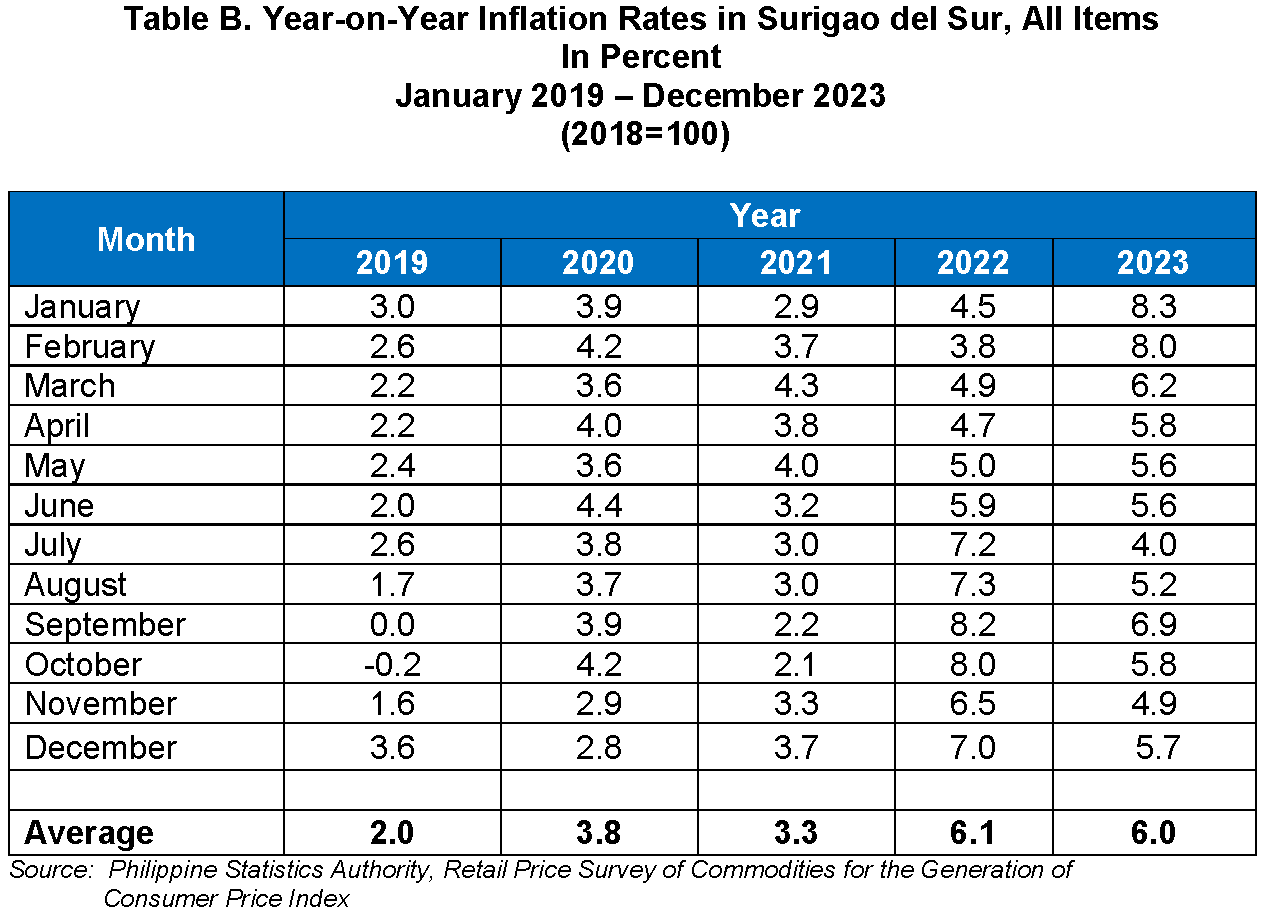
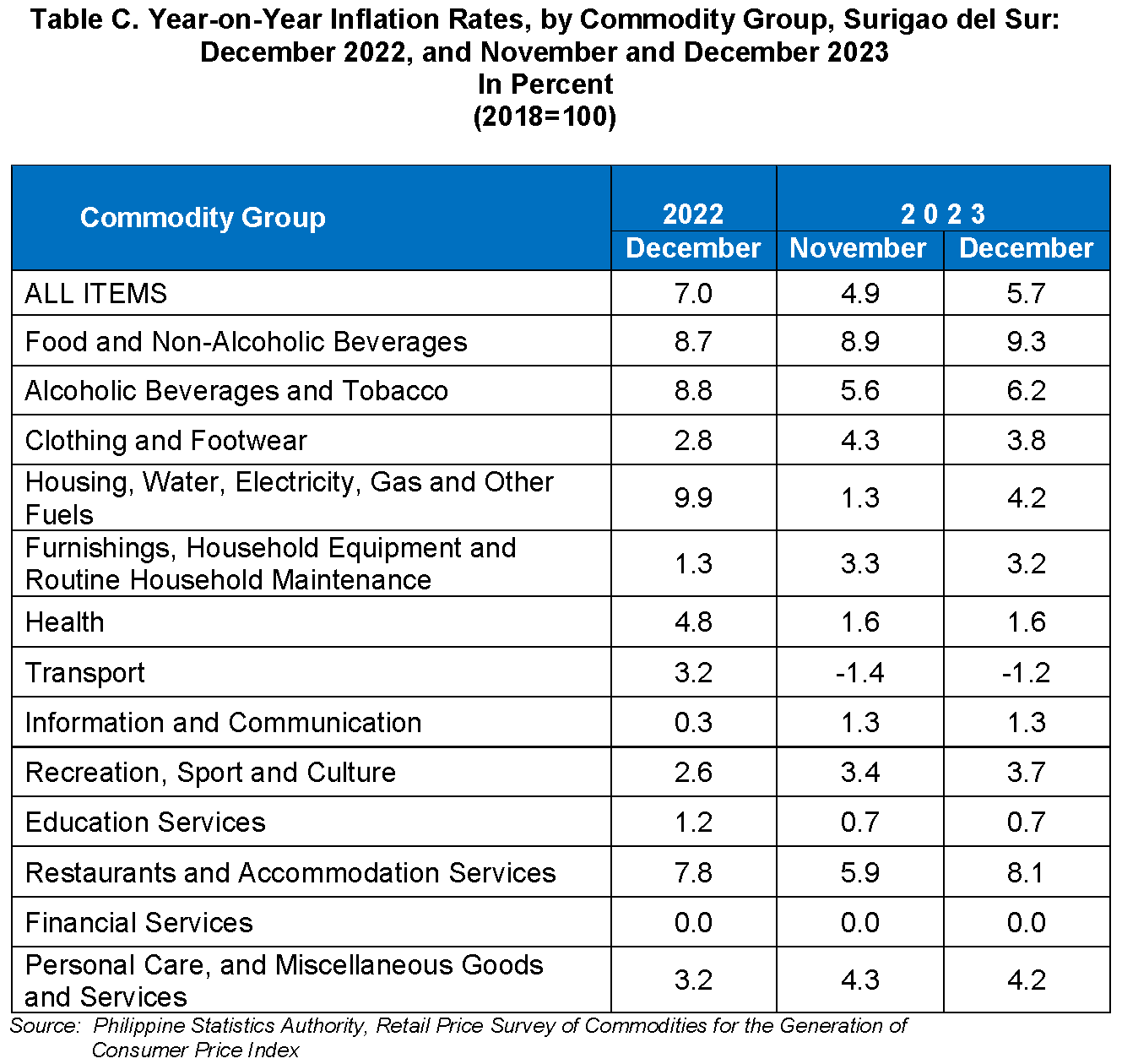
Food Inflation
At the provincial level, the food index rose to 9.9 percent in December 2023, from
9.4 percent in the previous month. In December 2022, food inflation was lower at
8.8 percent.
Likewise, the following food groups exhibited higher inflation rates during the month:
a. Meat and other parts of slaughtered land animals, 0.0 percent from -0.1 percent;
b. Fish and other seafood, -6.9 percent from -10.5 percent; and
c. Milk, other dairy products and eggs, 14.3 percent from 10.7 percent;
On the contrary, lower inflation rates were observed in the following commodity groups:
a. Oils and fats, 2.7 percent from 3.5 percent;
b. Fruits and nuts, 10.6 percent from 11.9 percent;
c. Vegetables, tubers, plantains, cooking bananas and pulses, 0.3 percent from 3.8 percent;
d. Sugar, confectionery and desserts, -9.0 percent from -8.4 percent; and
e. Ready-made food and other food products n.e.c, 6.2 percent from 7.5 percent.
Meanwhile, the Cereals and cereal products retained its previous month’s annual rates. (Table D)
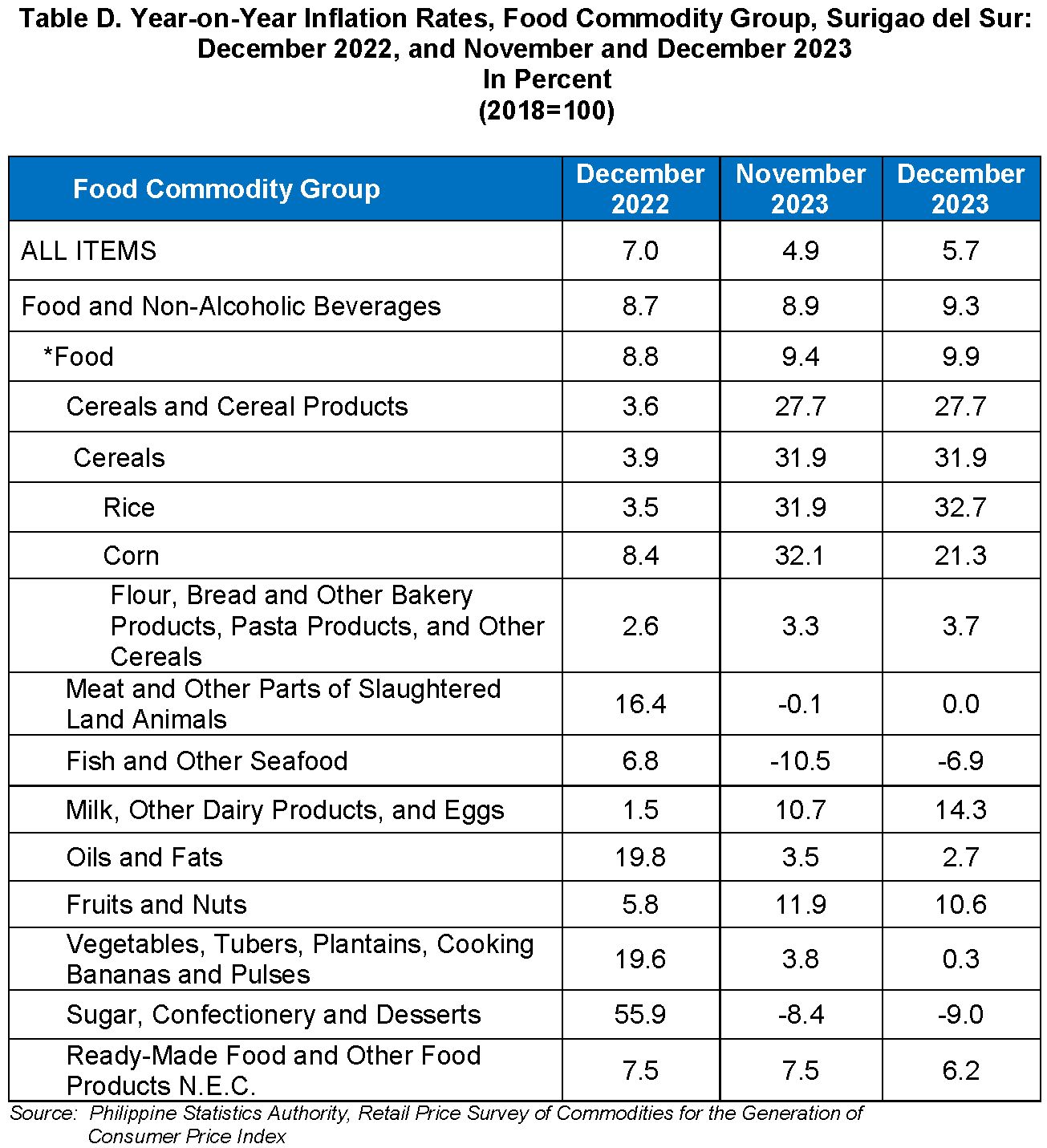
TECHNICAL NOTES
Consumer Price Index (CPI) - The CPI is an indicator of the change in the average retail prices of a fixed basket of goods and services commonly purchased by households relative to a base year.
Components of the CPI
a. Base Period - The reference data or base period is the benchmark or reference date or period at which the index is taken as equal to 100.
b. Market Basket - A sample of the thousands of varieties of goods purchased for consumption and services availed by the households in the country selected to represent the composite price behavior of all goods and services purchased by consumers.
c. Weighing System - The weighing pattern uses the expenditures on various consumer items purchased by households as a proportion to total expenditure.
d. Formula - The formula used in computing the CPI is the weighted arithmetic mean of price relatives, the Laspeyres formula with a fixed base year period (2018) weights.
e. Geographic Coverage - CPI values are computed at the national, regional, and provincial levels, and for selected cities.
Inflation Rate (IR) - is the rate of change of the CPI expressed in percent. Inflation is interpreted in terms of the declining purchasing power of peso.
Purchasing Power of Peso (PPP) - shows how much the peso in the base period is worth in the current period. It is computed as the reciprocal of the CPI for the period under review multiplied by 100.
Approved for release:
(Sgd.)RUEL L. DRES
Chief Statistical Specialist

